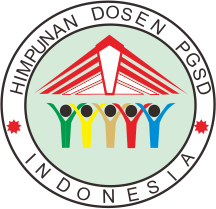OVERCOME THE PROBLEM OF DEVIANT BEHAVIOR THROUGH GROUP GUIDANCE TECHNIQUES FOR JUNIOR HIGH SCHOOL STUDENTS
DOI:
https://doi.org/10.30595/dinamika.v13i1.8023Keywords:
Deviant behavior, Middle School Students, Group GuidanceAbstract
   ABSTRAK: The main problem in this research is to overcome the low ability of students to solve problems., Which almost every day many problems that arise such as: personal, social, career and even learning difficulties. The sample in this study, namely 7th grade SMP 12 Malang.
The results of the assessment appear in table 4.3 which states "I feel a loss if I do not go to school" shows the 35% increase in cycle II to 59%. Besides that, based on the analysis of observational data at the time of the action, it can be seen in the average results of students' understanding of behavior during the first cycle of 5.83 and at the meeting of the first 2 cycles there was an average increase of slightly to 6.5 Similarly the average results at the meeting 3 is 7 and at the 4th meeting of the second cycle II the average value of the assignment (post test) was 8.3.
       Based on the findings of this study it is suggested to the Guidance and Counseling Teachers to apply group guidance techniques in alleviating student problems. With the use of group guidance on students, it can help enlighten the problem in accordance with the group guidance goals referred to in this study.
References
REFERENCES
Aitchison, J. (2012).Words in the Mind: An Introduction to the Mental Lexicon. John Wiley & Sons.
Amanuel, A.T (2009). Human Resource Management for Education Practitioners in Africa: Teaching and Teacher Education 15, 849-859.
Bambara, L. M., Nonnemacher, S., Kern, L. (2009). Sustaining school-based individualized positive behavior support. Journal of Positive Behavioral Interventions, 11, 161-176. doi: 10.1177/1098300708330878
Bear, G. G. (2010). From school discipline to self-discipline. New York: Guilford Press.
Owen, S.V., Froman, R.D., & Moscow,H.(1981). Educational Psychology: An Introduction (2nd ed). Boston: Little, Brown Company.
Bennet, Margarret E. (1963). Guidance and Counseling In Groups. USA: Mc Graw-Hill Book Company, Inc
Damron-Bell, J.(2011).The development of deviant behavior in adolescents: the influence of student characteristics and school climate. ElectronicThesesandDissertations,Paper 309.
Hayden,C. (2007).Children in Trouble, the Role of Families, Schools and Communities, Basingstoke: Palgrave/Macmillan.
Rodger,J.J. (2008). Criminalising Social Policy. Anti-Social Behavior and Welfare in a De-civilised Society. Cullumpton/Devon: Willan Publishing.
Furniss,C. (2000). Bullying in schools: It’s not a crime –Is it? Education and the Law, 12(1), 9-29. https://doi.org/10.1080/713667559.
Goode, E. (2016). Deviant Behavior (11th ed.). New York: Routledge.
Corey. 2012. Theory & Practice of Group Counseling. Canada: Cengage Learning.
Vygotsky, L. S. (1998). The problem of age (M. Hall, Trans.). In R. W. Rieber (Ed.), The collected works of L. S. Vygotsky: Vol. 5. Child psychology (pp. 187-205). New York: Plenum Press. (Original work written 1933-1934).
Skiba, R. J., & Peterson, R. L. (2011). The dark side of zero tolerance: Can unishment lead to safe schools? Phi Delta Kappan, 30, 372-376.
Denzin, N.K. (2010). Rules of conduct and the study of deviant behavior: Some notes on the socialrelationship. In M. McCall (ed.) Friendship as a Social Institution, 62-95.New York: Routedge.
Wolfe, S.E., Marcum, C.D., Higgins, G.E., & Ricketts, M.L. (2014). Routine cell phone activity and exposure to text messages: Extending the generality of routine activity theory and exploring the etiology of a risky teenage behavior. Crime & Delinquency, 62(5), 614 –644. https://doi.org/10.1177/0011128714541192
Published
How to Cite
Issue
Section
License
Authors who publish with this journal agree to the following terms:
Authors retain copyright and grant the journal right of first publication with the work simultaneously licensed under a Creative Commons Attribution License that allows others to share the work with an acknowledgement of the work's authorship and initial publication in this journal.
Authors are able to enter into separate, additional contractual arrangements for the non-exclusive distribution of the journal's published version of the work (e.g., post it to an institutional repository or publish it in a book), with an acknowledgement of its initial publication in this journal.
Authors are permitted and encouraged to post their work online (e.g., in institutional repositories or on their website) prior to and during the submission process, as it can lead to productive exchanges, as well as earlier and greater citation of published work (See The Effect of Open Access).

Dinamika Jurnal Ilmiah Pendidikan Dasar is licensed under a Creative Commons Attribution 4.0 International License.














